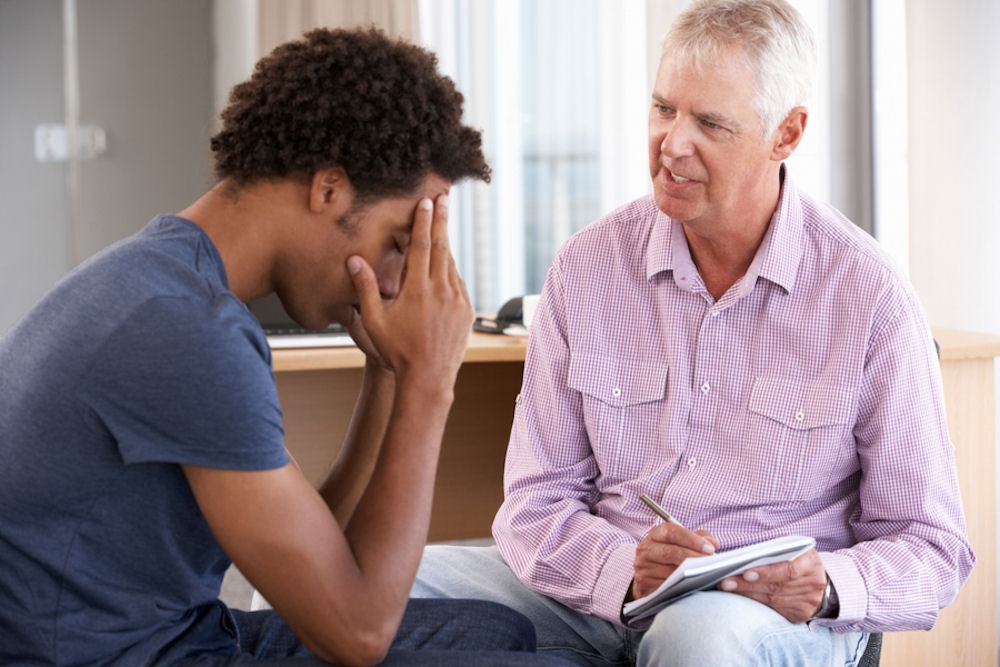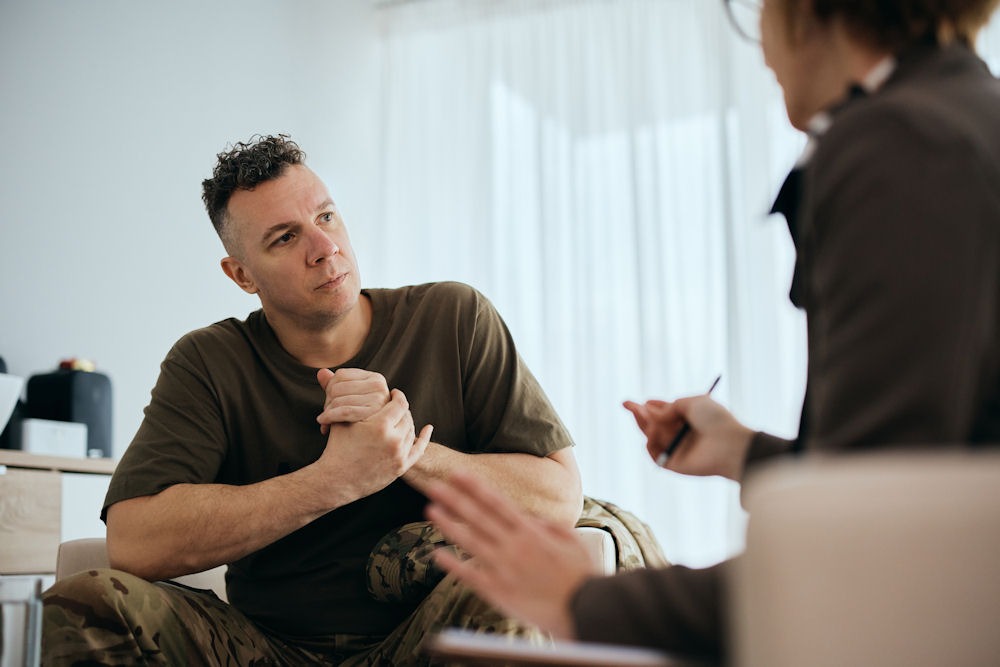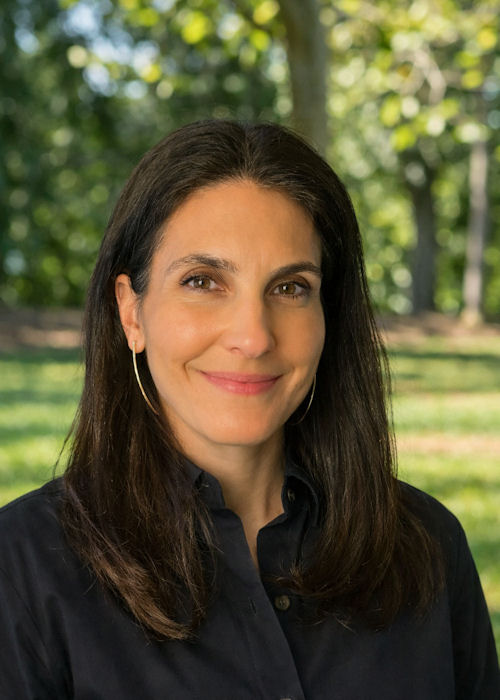Anxiety is a natural response to stress or danger. But when it becomes overwhelming or chronic, it can spiral into a cycle that reinforces itself.
This is known as the cycle of anxiety, a process where avoidance of feared situations leads to temporary relief. But this ultimately causes anxiety to resurface, often more intensely than before. This cycle also erodes confidence in one’s ability to cope, making the anxiety feel impossible to overcome. By recognizing the patterns and addressing the underlying causes, individuals can begin to regain control over their lives.
Understanding the Cycle of Anxiety
In using avoidance to relieve anxiety, the individual may experience short-term relief by performing actions that reinforce and intensify the anxiety over time. It can also erode confidence in one’s ability to cope, leading to the adoption of unhealthy or maladaptive coping mechanisms. It’s a self-sustaining loop that often leaves individuals feeling trapped and unable to manage their fears.
The Trigger
The cycle begins with a trigger, which can be a situation, thought, or event that provokes fear or worry. Triggers vary widely and may include social interactions, work pressures, or intrusive thoughts. For example, a person with social anxiety may feel apprehensive about attending a gathering. Every reminder or notice that makes them remember the upcoming gathering may act as a trigger.
Anxiety Response
The trigger causes the body and mind to react with feelings of anxiety. This response can manifest as physical symptoms like a racing heart, sweating, or nausea. They can happen alongside mental symptoms such as fear, worry, or catastrophic thinking. These feelings can be overwhelming and difficult to tolerate, increasing the desire to escape or avoid the source of discomfort.
Avoidance or Maladaptive Coping
To alleviate distress, many individuals resort to avoidance or unhealthy coping mechanisms. Avoidance might involve skipping a social event, procrastinating on a task, or steering clear of feared situations altogether. Some may turn to maladaptive behaviors, such as substance use, overeating, or excessive screen time. The brain learns to associate avoidance or maladaptive coping with relief, reinforcing the behavior.
Temporary Relief
The momentary comfort gained through avoidance or unhealthy habits often reinforces the belief that avoiding the trigger is necessary to prevent further anxiety. However, this relief is fleeting and deceptive — it does not address the root cause of the anxiety. The person is prevented from confronting and overcoming the underlying fear.
Return of Anxiety and Loss of Confidence
Because avoidance doesn’t resolve the underlying issue, the anxiety inevitably returns. It often can return even stronger than before. Over time, individuals may begin to doubt their ability to handle anxiety-provoking situations. This creates a sense of helplessness and increases the reliance on avoidant or unhealthy behaviors.
The more this cycle repeats, the more entrenched it becomes and it is increasingly difficult to break free. It is crucial to seek treatment for anxiety disorder if you are repeatedly experiencing one or more symptoms of this condition.
Types of Anxiety

There are several types of anxiety, each with distinct symptoms, triggers, and treatment approaches. Understanding these types can help individuals seek appropriate support and coping strategies.
Generalized Anxiety Disorder (GAD)
Generalized anxiety disorder is characterized by excessive and uncontrollable worry about various aspects of daily life, such as work, health, relationships, or finances. This worry is often disproportionate to the actual situation and can lead to physical symptoms like fatigue, restlessness, muscle tension, and difficulty concentrating.
Social Anxiety Disorder (SAD)
Social anxiety disorder, also known as social phobia, involves the intense fear or avoidance of social situations. Individuals with SAD often worry about being judged, embarrassed, or humiliated in public. Common scenarios that trigger anxiety include public speaking, meeting new people, or eating in front of others.
Panic Disorder
Panic disorder is marked by recurring and unexpected panic attacks. These sudden episodes of intense fear or discomfort may include symptoms such as chest pain, shortness of breath, dizziness, sweating, and a sense of impending doom. Panic attacks can occur without a clear trigger and can lead to a persistent fear of future attacks.
Obsessive-Compulsive Disorder (OCD)
Though not classified as an anxiety disorder, obsessive-compulsive disorder (OCD) has a strong connection to anxiety. It involves intrusive, unwanted thoughts (obsessions) and repetitive behaviors or mental acts (compulsions) performed to alleviate distress. For example, someone with OCD may feel compelled to wash their hands to an excessive degree to prevent contamination.
Signs and Symptoms of Anxiety Disorders
Anxiety disorders can differently in everyone, but common signs and symptoms include:
Physical Symptoms:
- Rapid heartbeat (palpitations)
- Shortness of breath
- Sweating
- Trembling or shaking
- Gastrointestinal distress (such as nausea, diarrhea, stomach pain)
- Muscle tension or headaches
- Dizziness or lightheadedness
Psychological Symptoms:
- Persistent worry or fear
- Irritability
- Difficulty concentrating
- Restlessness
- Catastrophic thinking (imagining the worst possible outcomes)
Behavioral Symptoms:
- Avoidance of certain situations or people
- Compulsive checking or seeking reassurance
- Difficulty initiating or completing tasks due to fear of failure
While occasional anxiety is a normal part of life, chronic or severe symptoms may indicate an anxiety disorder that requires professional attention.
Stages of Anxiety
Anxiety exists on a spectrum ranging from mild to severe. Recognizing the stages can help individuals identify if they have an anxiety disorder and may help professionals intervene appropriately.
Mild Anxiety
Mild anxiety is often manageable and can even be beneficial in small doses. It may help individuals stay alert, focused, and motivated. For example, mild anxiety before a job interview or exam can encourage preparation and sharpen performance.
Common signs include:
- Slight restlessness
- Increased alertness
- Subtle physical tension
Mild anxiety typically doesn’t interfere with daily functioning. But if left unchecked, it can progress to more intense stages.
Moderate Anxiety
- Noticeable tension or nervousness
- Faster heartbeat or shallow breathing
- Difficulty focusing on anything other than the source of anxiety
Severe Anxiety
- Intense physical symptoms, such as chest pain or dizziness
- Overwhelming feelings of fear or helplessness
- Trouble sleeping due to racing thoughts
Panic
Panic represents the most intense stage of anxiety. It is characterized by sudden and overwhelming episodes of fear, often referred to as panic attacks. These episodes can be debilitating and may feel life-threatening even though they are not.
Common signs include:
- Extreme physical symptoms, such as difficulty breathing, a racing heart, or chest pain
- Feelings of impending doom or losing control
- Dissociation or feeling detached from reality
Panic attacks can occur unexpectedly or be triggered by specific situations. They often leave individuals feeling exhausted and fearful of future attacks, which can lead to avoidance and perpetuating the anxiety cycle.
Treatment for Anxiety

Effective treatment for anxiety depends on its severity, underlying causes, and whether it stems from an anxiety disorder or another condition. Treatment typically involves a combination of therapy, medication, and lifestyle changes.
Therapy
- Cognitive Behavioral Therapy (CBT): CBT helps individuals identify and challenge distorted thought patterns that fuel anxiety. It also teaches practical coping strategies, such as exposure therapy, which gradually reduces avoidance behaviors.
- Dialectical Behavior Therapy (DBT): DBT focuses on building emotional regulation, mindfulness, and distress tolerance skills.
- Exposure Therapy: Particularly effective for phobias and PTSD, exposure therapy involves gradual and controlled exposure to anxiety triggers to reduce fear over time.
Medication
- Selective Serotonin Reuptake Inhibitors (SSRIs): Antidepressants like sertraline or fluoxetine are often prescribed for anxiety disorders.
- Benzodiazepines: Medications like lorazepam or alprazolam provide quick relief but are typically used short-term due to the risk of dependence.
- Beta-Blockers: These can help manage physical symptoms, such as a racing heart.
Lifestyle Changes
Adopting healthy habits can significantly reduce anxiety. Key strategies include:
- Regular Exercise: Physical activity reduces stress hormones and boosts mood.
- Balanced Diet: Avoiding caffeine, sugar, and processed foods can prevent spikes in anxiety.
- Sleep Hygiene: Establishing a consistent sleep schedule and creating a relaxing bedtime routine can improve overall well-being.
- Stress-Management Techniques: Practices like mindfulness, meditation, or yoga can help regulate the body’s stress response.
Learn How to Manage Anxiety at First Steps Recovery
Breaking free from the cycle of anxiety requires support, effective strategies, and a commitment to change. At First Steps Recovery in Clovis, CA, we provide compassionate, evidence-based care to help individuals reclaim their lives from anxiety.
Our team of experienced professionals tailors treatment plans to each individual’s needs, whether they’re dealing with an anxiety disorder, chronic anxiety, or anxiety stemming from addiction. Through a combination of therapy, holistic practices, and relapse prevention strategies, we empower clients to build resilience and confidence in their ability to manage anxiety.
At First Steps Recovery, we believe that recovery is about overcoming anxiety and rediscovering joy, purpose, and connection. Contact us today to learn how we can help you break the cycle of anxiety and embrace a brighter future.
Dr. Belis Aladag is a board-certified physician in Addiction Medicine and Family Medicine, with a Master of Public Health from Johns Hopkins. She brings more than 15 years of experience in clinical care, medical education, and leadership. Recognized as a “Top Doctor” in Sacramento Magazine and Los Angeles Magazine, Dr. Aladag is dedicated to compassionate, evidence-based care and expanding access to mental health and addiction services.





